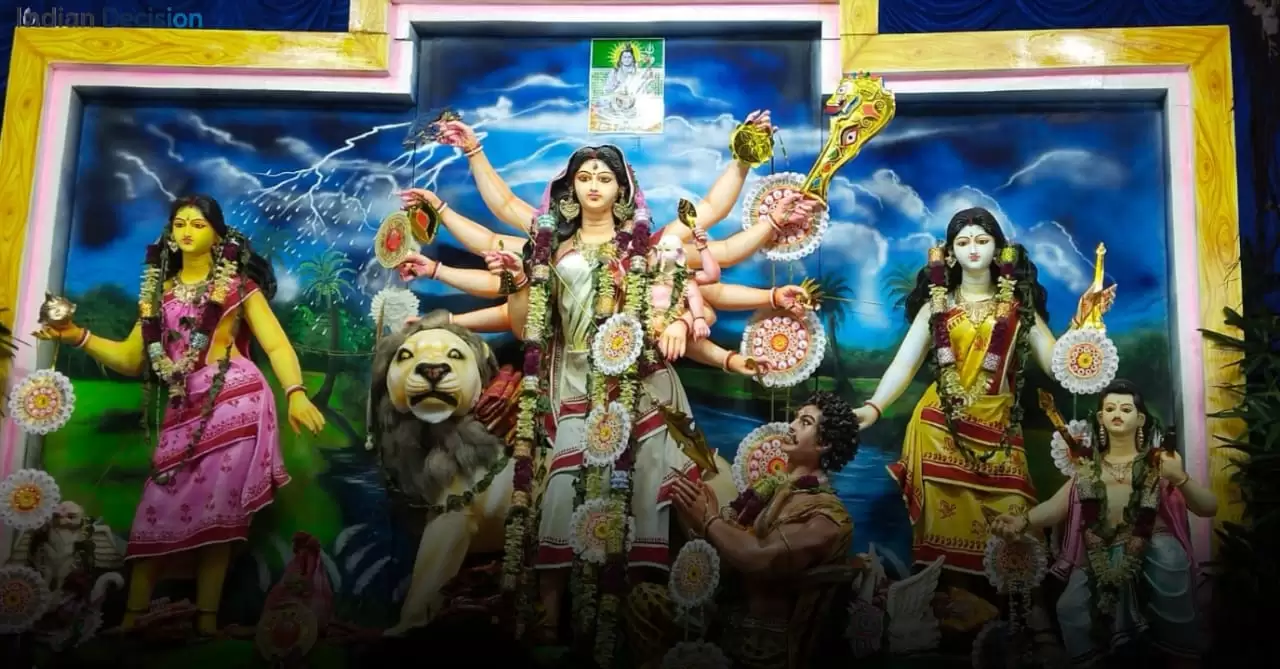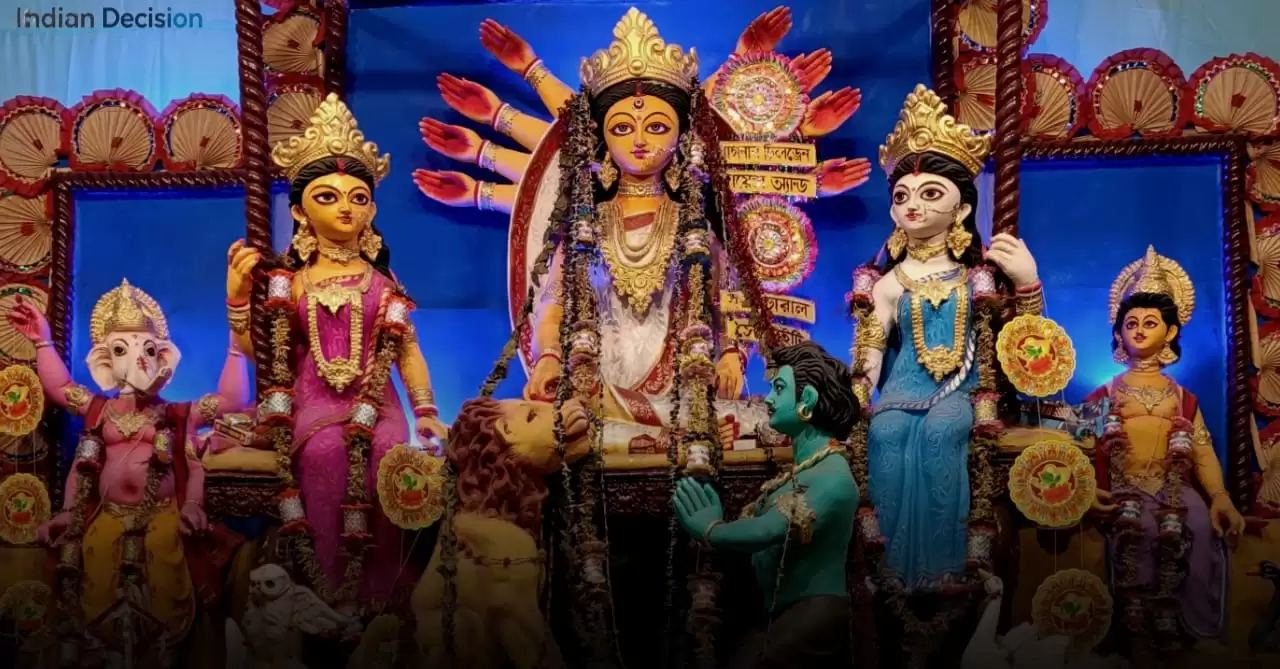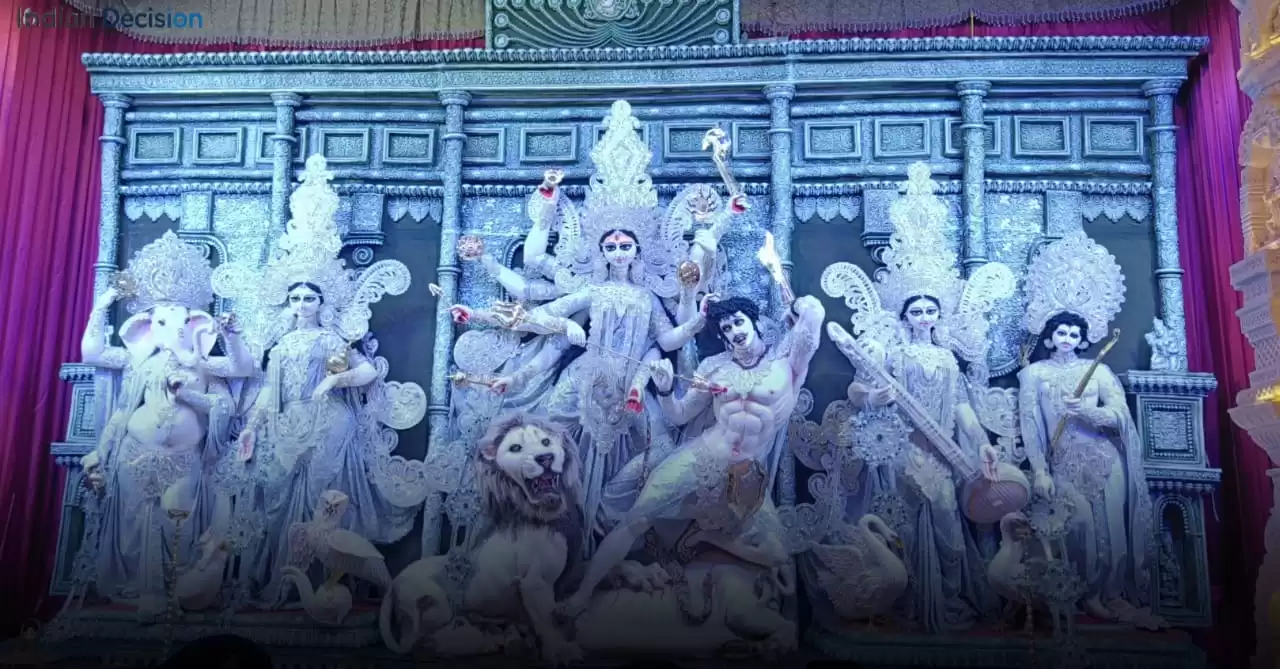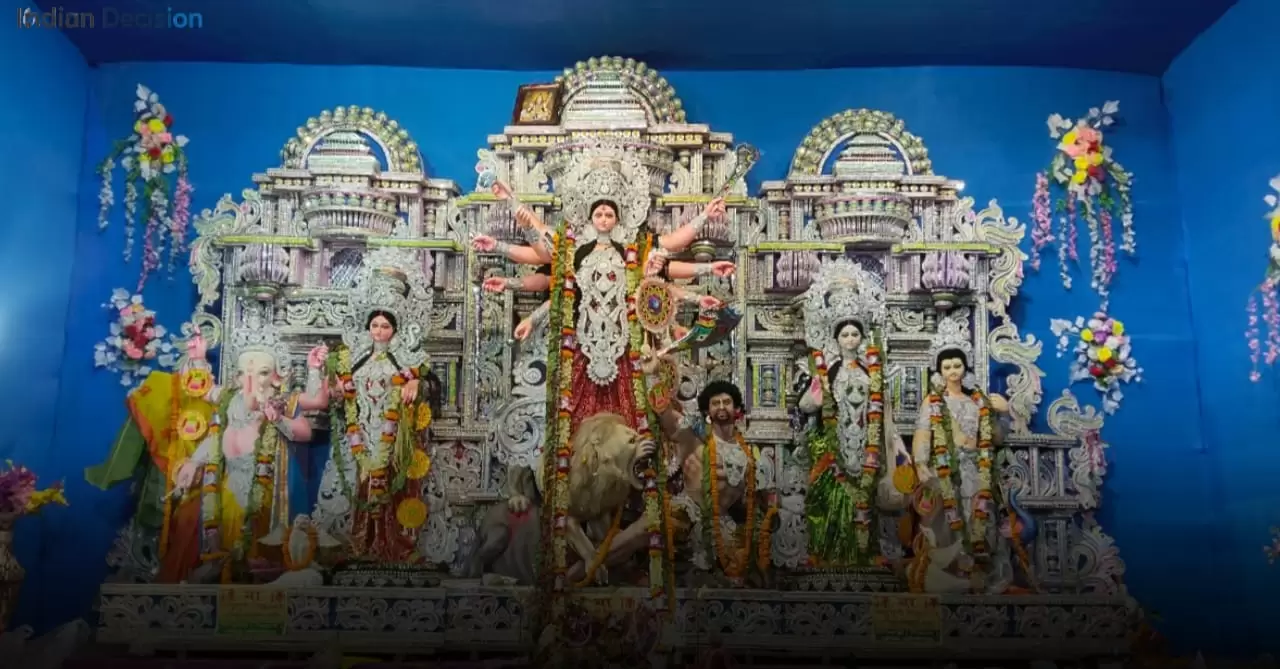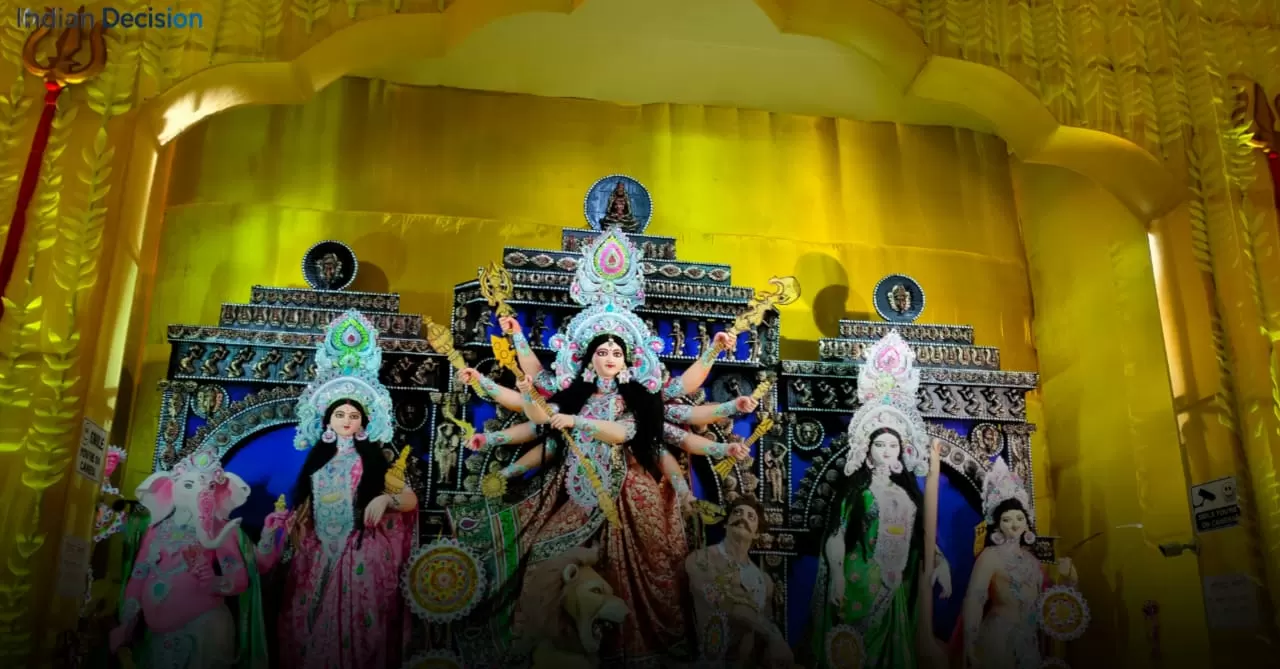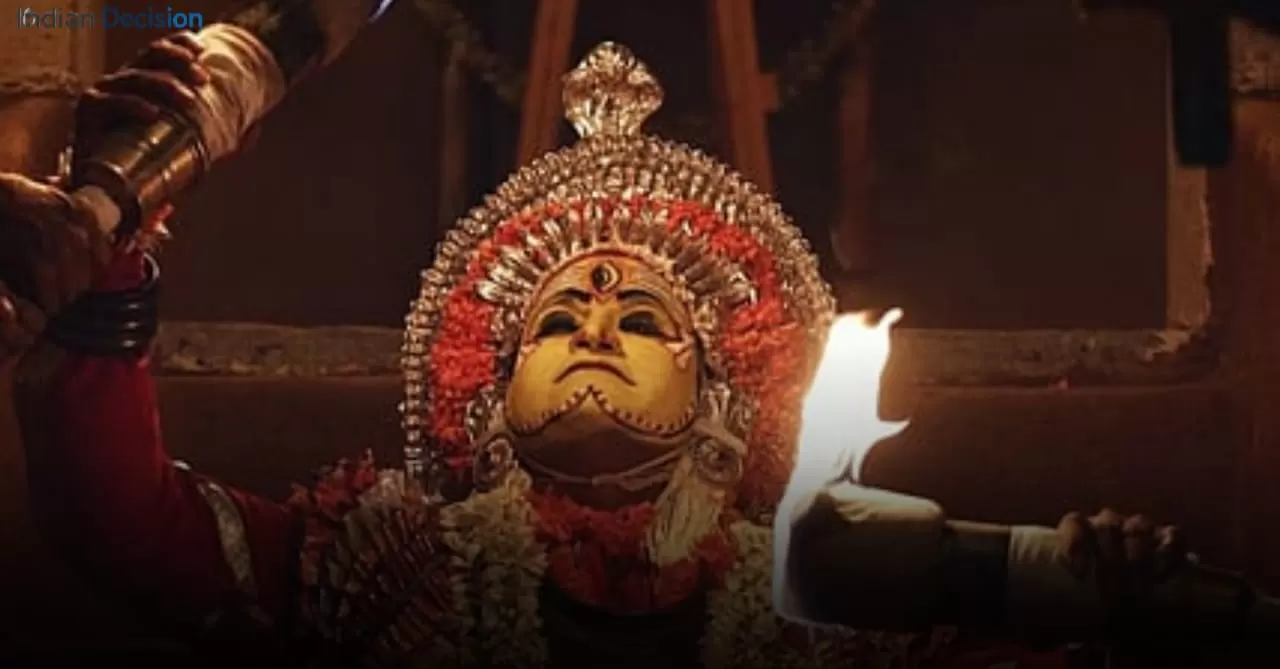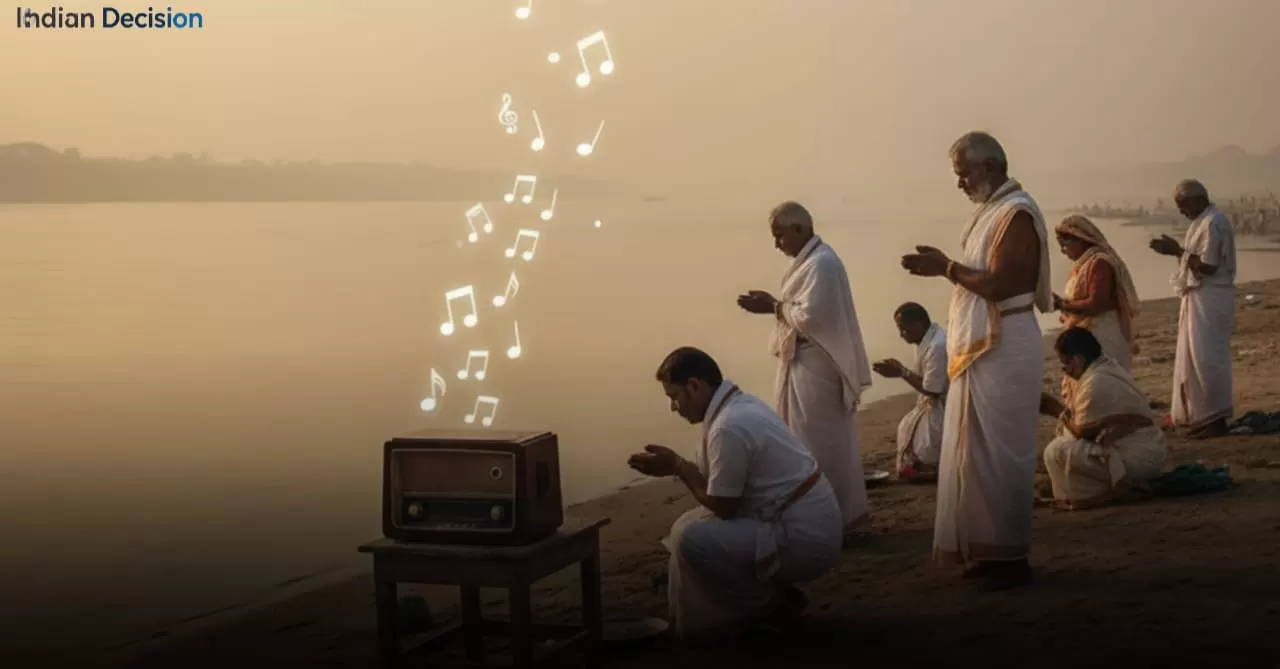Publish Date: 22/09/2025 | Update: 24/09/2025
Shardiya Navratri 2025: Dates, Rituals & Ghatasthapana Muhurat
Shardiya Navratri in 2025 begins on Monday, September 22. The nine-day festival honors Goddess Durga in her various forms, with devotees across India observing fasting, prayers, and cultural celebrations. The first and most important ritual, Ghatasthapana, sets the spiritual tone for the festival. In 2025, it should be performed during the auspicious Kanya Lagna between 6:09 AM and 8:06 AM. For those unable to perform it in the morning, the Abhijit Muhurat between 11:49 AM and 12:38 PM is also considered highly favorable.
Navratri 2025: Daily Goddess Worship and Colours
Each day of Navratri is devoted to a specific manifestation of Goddess Durga. Devotees also follow the tradition of wearing symbolic colours that represent the goddess of the day:
| Day | Date | Goddess | Colour |
|---|---|---|---|
| Day 1 | Sept 22 | Shailputri | White |
| Day 2 | Sept 23 | Brahmacharini | Red |
| Day 3 | Sept 24 | Chandraghanta | Royal Blue |
| Day 4 | Sept 25 | Kushmanda | Yellow |
| Day 5 | Sept 26 | Skandamata | Green |
| Day 6 | Sept 27 | Katyayani | Grey |
| Day 7 | Sept 28 | Kalaratri | Orange |
| Day 8 | Sept 29 | Mahagauri | Peacock Green |
| Day 9 | Sept 30 | Siddhidatri | Pink |
How to Perform Ghatasthapana
Ghatasthapana, also called Kalash Sthapana, marks the formal beginning of Navratri. Here is the step-by-step process:
- Prepare the puja space: Clean the area and place a raised platform.
- Set up the Kalash: Fill it with water, place mango leaves around the opening, and cover it with a coconut.
- Invocation: Begin with Ganesh Vandana to remove obstacles.
- Chant mantras: Recite the Ghatasthapana Mantra to invite the goddess.
- Offer prayers: Light incense, offer flowers, and place fruits or sweets as prasad.
Fasting Rules and Food Traditions During Navratri
Navratri fasting is both a spiritual and dietary discipline. While practices vary by region, the following guidelines are commonly observed:
- Foods Allowed: Sabudana (tapioca), kuttu (buckwheat flour), singhara (water chestnut flour), fruits, milk, makhana, and rock salt (sendha namak).
- Avoid: Regular grains like wheat and rice, onion, garlic, non-vegetarian food, and table salt.
- Daily Routine: Many devotees eat fruits or light meals during the day and have a simple satvik dinner at night.
- Popular Dishes: Sabudana khichdi, aloo ki sabzi, kuttu puri, samak rice, and fruit chaat are widely prepared.
- Regional Variations: In Gujarat, fasting is often accompanied by nightly garba and dandiya dances, while in North India, special jagrans and kirtans are organized.
Some devotees observe a full fast (nirjala), consuming only water, while others follow partial fasting based on personal capacity. On the eighth (Ashtami) or ninth (Navami) day, many households perform Kanya Pujan, offering food and gifts to young girls, symbolizing the nine forms of Goddess Durga.
Cultural Celebrations Across India
Navratri is not only a spiritual observance but also a vibrant cultural festival that takes different forms across regions:
- Gujarat and Maharashtra: Devotees celebrate with Garba and Dandiya Raas, filling nights with music, dance, and colourful attire.
- North India: Ramlila performances are staged, depicting episodes from the Ramayana, and the festival culminates with the burning of Ravana effigies on Vijayadashami.
- West Bengal, Assam, and Odisha: The festival blends into the grand Durga Puja celebrations, where elaborately crafted idols of the goddess are installed in pandals and worshipped with cultural programs.
- South India: Families arrange Golu or Kolu displays step-like arrangements of dolls and deities while special pujas and community feasts are organized.
Together, these celebrations reflect India’s rich diversity, uniting people through devotion, art, and tradition during the nine auspicious nights.
Why Ghatasthapana is Important
This ritual is believed to invoke the divine energy of Goddess Durga into the kalash, symbolizing prosperity, strength, and protection. Traditionally, families begin new ventures or resolve to start positive habits during this time, making it both a spiritual and cultural milestone.
FAQs on Navratri 2025
1. What is Ghatasthapana?
It is the ritual of invoking Goddess Durga’s energy into a sacred kalash, marking the start of Navratri.
2. What is the Muhurat for Ghatasthapana in 2025?
The main muhurat is from 6:09 AM to 8:06 AM on September 22. The alternative Abhijit Muhurat is from 11:49 AM to 12:38 PM.
3. What colours are worn each day?
Devotees wear White, Red, Royal Blue, Yellow, Green, Grey, Orange, Peacock Green, and Pink, in that order, during the nine days.
4. Which goddess is worshipped first?
Navratri begins with the worship of Goddess Shailputri, who represents purity and new beginnings.
Conclusion
Shardiya Navratri 2025 is more than a religious festival it is a time of renewal, devotion, and cultural unity. By observing the rituals, following the daily colours, embracing fasting traditions, and offering prayers with sincerity, devotees invite blessings of health, peace, and prosperity. May this Navratri illuminate homes and hearts alike.
Related guides: Hindi Diwas 2025 | Durga Puja 2025 Calendar | Mahalaya 2025 Guide

